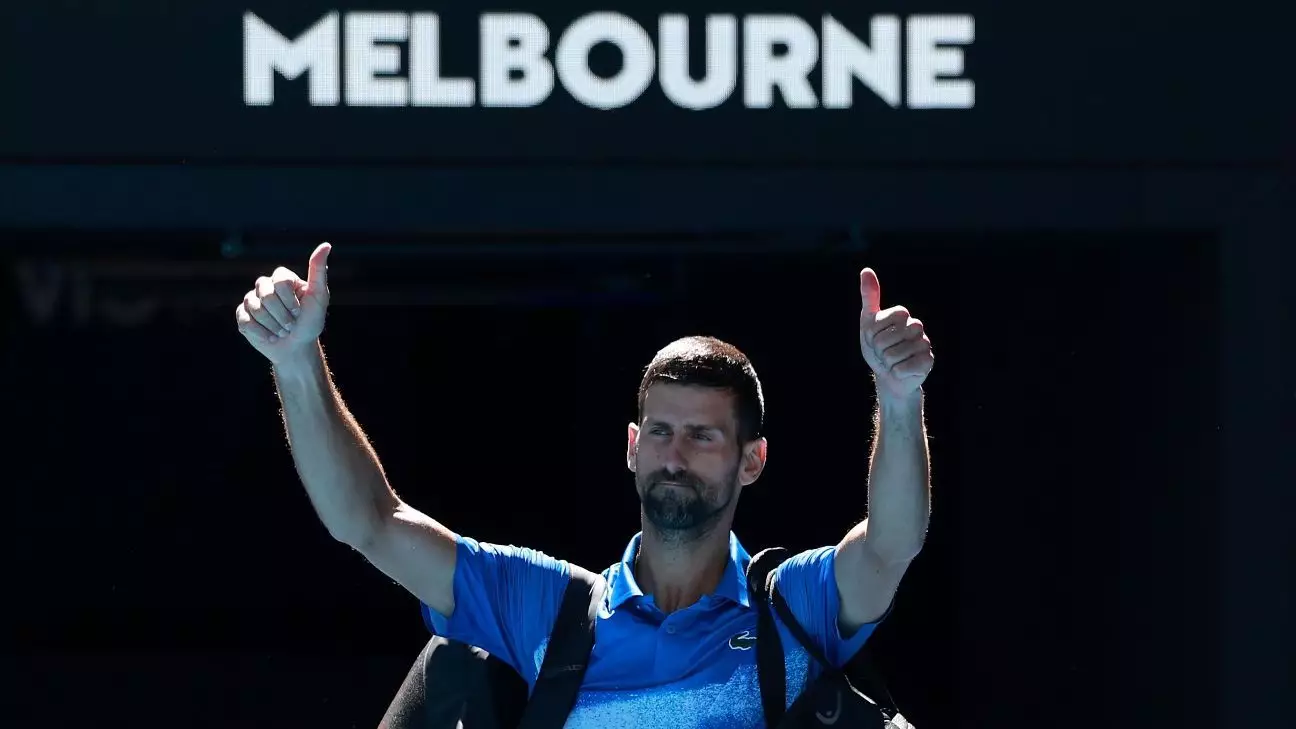Recently, Novak Djokovic found himself in the unfortunate position of having to withdraw from a much-anticipated semifinal match at the Australian Open due to a severe hamstring injury. The incident unfolded dramatically; after dropping the first set in a tiebreaker against Alexander Zverev, Djokovic, a four-time champion at this prestigious tournament and a 24-time Grand Slam winner, made the heart-wrenching decision to retire from the match entirely. This moment was compounded by negative reactions from spectators, who booed him as he exited the court. The mix of disappointment and incredulity in the crowd serves as a stark reminder of the high expectations placed on elite athletes and the sometimes unforgiving nature of professional sports.
Djokovic’s injury situation reflects not only physical setbacks but also the psychological burdens encountered by those at the pinnacle of their sports. In his post-match social media update, Djokovic shared an MRI scan of his injured hamstring, implying that many of his critics might lack the expertise to fully understand the nuances of sports injuries. His emotional response, shared through a stoic social media post, captures the often-silenced frustrations of athletes who push their physical limits for the love of the game. Zverev, Djokovic’s opponent, stepped in during the aftermath, defending him against the crowd’s disrespectful jeers, highlighting the dedication Djokovic has shown to tennis over the last two decades.
This incident emphasizes a broader conversation about the nature of injuries in professional sports. Elite athletes like Djokovic frequently battle through significant pain and discomfort, often downplaying their physical conditions in the face of public scrutiny and pressure to perform. Following a grueling match against Carlos Alcaraz in the quarterfinals—a contest that finished with Djokovic heavily taped up—his decision to retire seems both rational and inevitable. He acknowledged the muscle tear he was grappling with, indicating that managing such injuries often comes with a mental toll as well.
As fans and analysts alike digest the significance of Djokovic’s recent reports of injury, questions surrounding his future performance arise. Although he did not provide specific details about his diagnosis or potential recovery timeline, his lack of clarity creates speculation and concern among supporters. The commitment to competing at such levels for 20 years can lead to cumulative physical tolls that require careful navigation. In many ways, Djokovic’s journey is emblematic of the broader athletic experience—a testament to relentless ambition tempered by the harsh realities of sport.
Djokovic’s recent experiences at the Australian Open highlight both the physical uncertainties inherent in elite sports and the emotional complexities faced by athletes. As he recovers and strategizes his next steps, the tennis world will be watching closely, hoping for his swift return to form. More importantly, Djokovic’s predicament serves as a poignant reminder of the sacrifices and challenges that elite athletes navigate, balancing the intense pressure to perform while dealing with personal health crises.


Leave a Reply